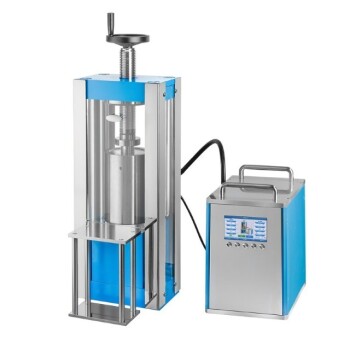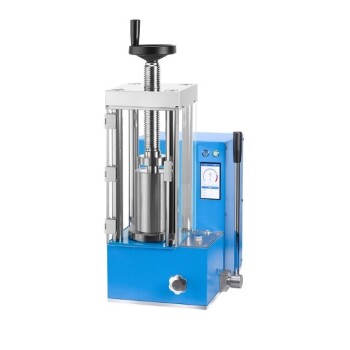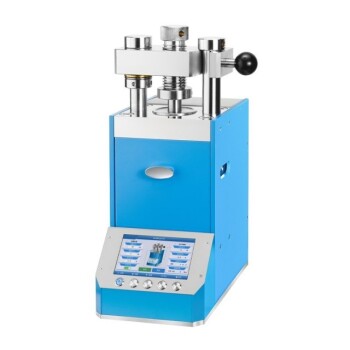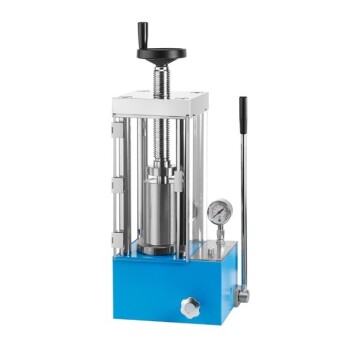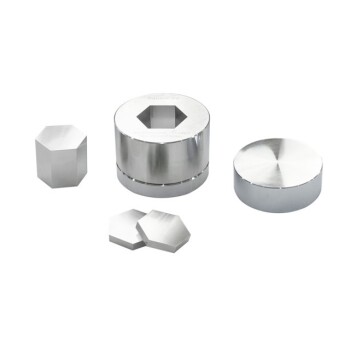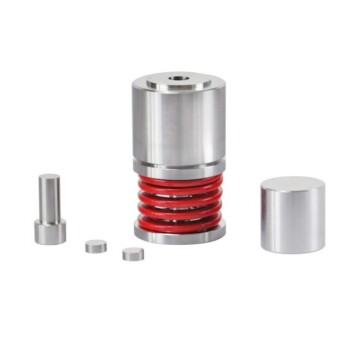In cold isostatic pressing (CIP), efficiency hinges on two primary factors: the physical characteristics of your powder and the engineering of your tooling. The goal is to achieve uniform compression, and this requires a powder with the right particle size distribution and flowability, combined with a mold designed specifically for that material and the desired final shape.
True efficiency in CIP is not measured solely by cycle time. It is defined by the ability to consistently produce a high-quality, uniform green compact that minimizes defects and ensures successful downstream processing, a result dictated entirely by the control you have over your raw materials and equipment.
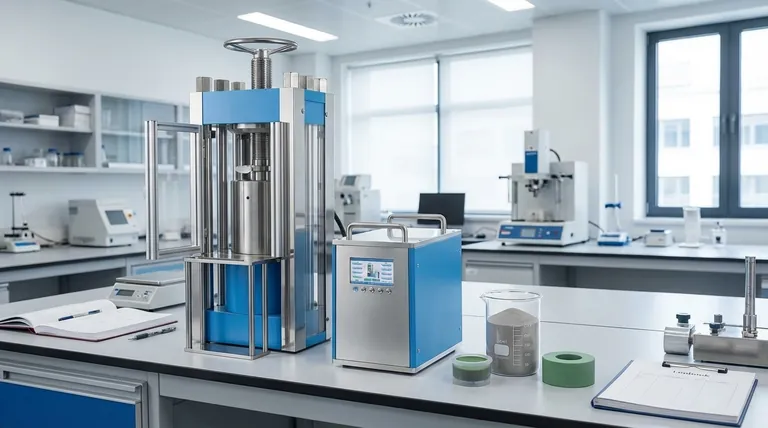
The Foundation: Powder Characteristics
The starting powder is the single most important variable in the CIP process. Its properties directly influence how it compacts under pressure and the quality of the resulting part.
The Role of Particle Size and Distribution
A well-defined particle size distribution is critical for achieving high packing density. A mix of larger and smaller particles allows the smaller ones to fill the voids between the larger ones, minimizing porosity before pressure is even applied.
This leads to a more uniform and dense "green" part after pressing.
Flowability and Apparent Density
Flowability determines how easily and consistently the powder fills the mold. Poor flow can lead to uneven density in the mold, which is a primary cause of defects, warping, and cracks in the final component.
The apparent density—the mass of the powder per unit volume in its loose state—provides a baseline. A higher apparent density generally means less compaction is required to reach the target green density.
Material Properties: Hardness and Composition
The intrinsic properties of the powder material itself play a huge role. The phase composition and grain size affect the powder's hardness and its behavior under pressure.
Harder powders are more difficult to compress and may require higher pressures to achieve the desired density. Controlling these characteristics is essential for predictable pressing and sintering performance.
The Blueprint: Tooling and Mold Design
The flexible mold, or tooling, is the vessel that translates isostatic pressure into a final shape. Its design and material are just as crucial as the powder itself.
Mold Material Selection
The mold is typically made from an elastomer like polyurethane or rubber. It must be flexible enough to transmit pressure uniformly but durable enough to withstand repeated cycles without tearing or deforming.
The material must also be chemically compatible with the working fluid, which is often water containing a corrosion inhibitor.
Geometric Design
The design of the tooling must accommodate the specific compaction ratio of the powder. It needs to be engineered to produce the desired final shape after the powder has been compressed, which can be a significant volume reduction.
Proper design helps prevent stress concentrations that can lead to defects in the pressed part.
Sealing and Vacuum Integrity
For many applications, the mold is filled with powder and then vacuum-sealed. A perfect seal is non-negotiable, as it prevents the working fluid from contaminating the powder.
Any leak compromises the integrity of the part and can lead to immediate failure during the pressing cycle.
Understanding the Trade-offs
While CIP is a highly efficient shaping process, it is governed by a set of practical trade-offs that every operator must manage.
Material Efficiency vs. Tooling Cost
CIP boasts near-zero material loss because there is no melting or chemical reaction. This makes it extremely efficient from a materials standpoint.
However, the initial cost of designing and fabricating high-quality, durable tooling can be significant, especially for complex geometries. This upfront investment must be weighed against the long-term material savings.
Throughput vs. Part Quality
While CIP is stable and suitable for mass production, simply increasing pressure or shortening cycle times can be counterproductive. Rapid pressurization can trap air or cause non-uniform compaction if the powder cannot settle properly.
True production efficiency comes from finding the optimal balance of speed and pressure that consistently yields defect-free parts.
Isostatic Ideal vs. Practical Reality
The core principle of CIP is perfectly uniform pressure application. However, friction between powder particles and between the powder and the mold wall can create minor density variations within the part.
Recognizing this reality is key to designing effective tooling and setting realistic expectations for the final product's density gradient.
Making the Right Choice for Your Goal
Your specific objective will determine which factors to prioritize. Use this as a guide to optimize your CIP process.
- If your primary focus is high-volume throughput: Prioritize a powder with excellent flowability and an automated tooling system that allows for rapid filling, sealing, and unloading.
- If your primary focus is creating complex geometries: Invest heavily in sophisticated mold design and use a powder with a broad particle size distribution to ensure it fills all features evenly.
- If your primary focus is maximizing final part performance: Place extreme emphasis on controlling the powder's intrinsic properties, such as grain size and chemical composition, to achieve the highest possible green density and optimal sintering behavior.
Ultimately, mastering cold isostatic pressing is a matter of controlling these fundamental inputs to predictably achieve your desired output.
Summary Table:
| Factor | Key Influence on CIP Efficiency |
|---|---|
| Powder Particle Size | Affects packing density and uniformity of compaction |
| Powder Flowability | Determines mold filling consistency and defect prevention |
| Mold Design | Ensures shape accuracy and minimizes stress concentrations |
| Material Hardness | Influences required pressure and compression ease |
| Vacuum Integrity | Prevents contamination and ensures part quality |
Optimize your lab's cold isostatic pressing process with KINTEK! We specialize in high-performance lab press machines, including automatic lab presses, isostatic presses, and heated lab presses, tailored to meet your laboratory needs. Our solutions help you achieve uniform green compacts, minimize defects, and enhance production efficiency. Contact us today to discuss how our equipment can benefit your specific applications and drive better results!
Visual Guide

Related Products
- Electric Split Lab Cold Isostatic Pressing CIP Machine
- Electric Lab Cold Isostatic Press CIP Machine
- Automatic Lab Cold Isostatic Pressing CIP Machine
- Manual Cold Isostatic Pressing CIP Machine Pellet Press
- Automatic Laboratory Hydraulic Press Lab Pellet Press Machine
People Also Ask
- How does CIP improve the mechanical properties of refractory metals? Boost Strength and Durability for High-Temp Applications
- What is Cold Isostatic Pressing (CIP) used for? Achieve Uniform Density in Complex Parts
- How does electrical Cold Isostatic Pressing (CIP) contribute to cost savings? Unlock Efficiency and Reduce Expenses
- How does Cold Isostatic Pressing (CIP) compare to Powder Injection Molding (PIM) in terms of shape complexity? Choose the Best Process for Your Parts
- What are the advantages of Cold Isostatic Pressing (CIP) for pellet preparation? Achieve Superior Density and Uniformity
